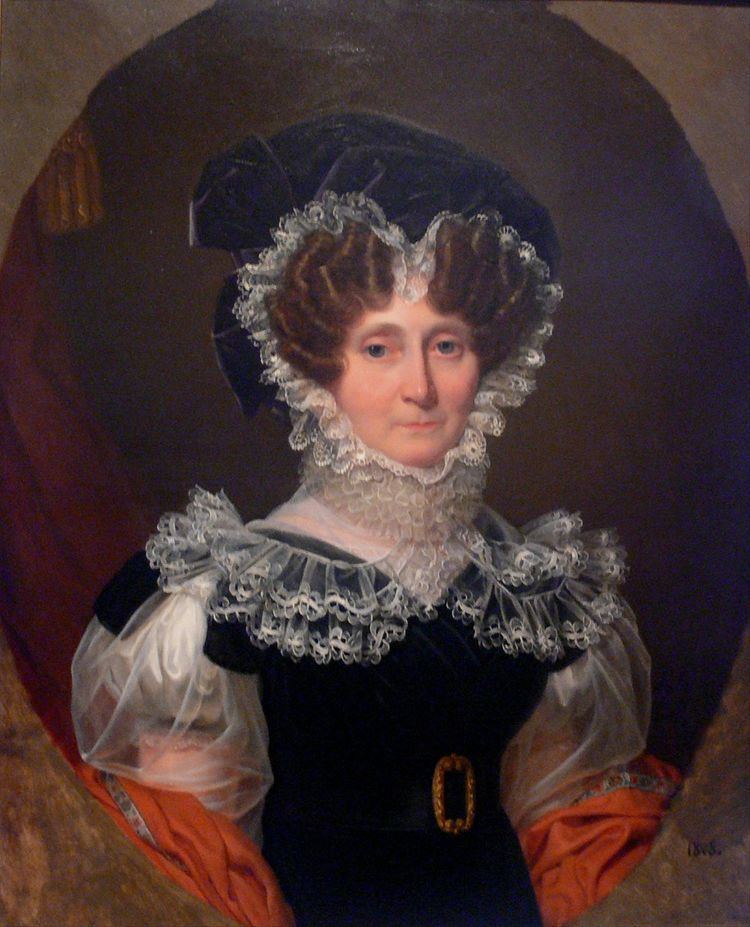Name Princess Zephyrine | ||
 | ||
Born 6 March 1760Paris ( 1760-03-06 ) Died October 17, 1841, Sigmaringen, Germany Parents Philip Joseph, Prince of Salm-Kyrburg Children Karl, Prince of Hohenzollern-Sigmaringen Grandchildren Karl Anton, Prince of Hohenzollern, Princess Amalie of Hohenzollern-Sigmaringen Grandparents Hendrik Gabriel Joseph of Salm-Kyrburg | ||
Amalie Zephyrine of Salm-Kyrburg (Paris, 6 March 1760 – Sigmaringen, 17 October 1841) was a daughter of Prince Philip Joseph of Salm-Kyrburg (the first prince of Salm-Kyrburg) and Princess Maria Thérèse de Hornes, eldest daughter and heiress of Maximilian, Prince of Hornes. She married into the House of Hohenzollern-Sigmaringen, and is considered the "savior" of Hohenzollerns.
Contents
Early life
Amalie was born and raised in Paris, although the family seat of the Salm-Kyrburgs was Kirn, which today is part of the German state of Rhineland-Palatinate. She was the eighth child in the family and was baptised at the Church of Saint-Sulpice.
In 1782, on her parents' request, she married erbprinz Anton Aloys, Prince of Hohenzollern-Sigmaringen. Her new home city of Sigmaringen was not to her taste, however, and three weeks after the birth of her son, Karl, in 1785, she returned to her native Paris. There her brother, Prince Frederik III, was busy with the building of the "Hôtel de Salm," which was to serve as the Paris residence of the Salm-Kyrburg family and a gathering place for members of the high nobility. (The hotel eventually was seized by the Revolutionary government and is today the Palais de la Légion d'Honneur.)
French Revolution
During the French Revolution, her brother Frederick and her lover, Alexandre de Beauharnais, were executed by guillotine in 1794 and buried in mass graves. Amalie survived the Revolution and in 1797, she used her connections to find out the location of the graves, which had been kept hidden from the French public. She secretly purchased the land on rue de Picpus and had it opened up to the rest of the garden, which is today called the Picpus Cemetery.
Despite her nobility, the princess maintained good relations with a number of influential figures of the Revolution, including Charles-Maurice de Talleyrand and even Joséphine de Beauharnais, widow of her lover and later the wife of Napoleon Bonaparte.
A few years later Amalie successfully used her contacts at the court of Napoleon to broker the Mediatisation of the houses of Hohenzollern-Sigmaringen and Hohenzollern-Hechingen. She also became guardian to her underage nephew Frederick IV of Salm-Kyrburg (1789-1859), who had become the prince of Salm-Kyrburg in 1794 after his father's execution.
Return to Sigmaringen
In 1808, after 20 years in Paris, the princess returned to Sigmaringen. Although her husband was still alive and they remained married, they lived amicably apart for the remainder of their lives. She first lived for two years with friends, and then in 1810 moved into a building of the former Inzigkofen Monastery. She finally moved into a residence, "Prinzenbau," that her husband had built for her in Sigmaringen.
Following her death at age 81, her son had a cliff on the banks of the Danube in Sigmaringen named the "Amalienfels" in her honor. Her name and the family coat of arms is carved into the rock.
Her great-grandson was Albert I, King of the Belgians from 1909 to 1934. Another great-grandson, Prince Karl of Hohenzollern-Sigmaringen, was crowned King of Romania in 1866 as Carol I.
